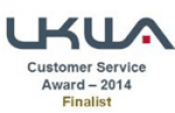Any business, within any sector, including charities, will experience a mixture of reactions to the ever-increasing availability of operational digitisation, whether it be readily accepted by innovators, and early adopters, or regarded as of latter importance by late adopters, the charity sector is no different; and like any other organisation within any other sector, businesses who do not adopt the principles of digital developments run the risk of falling behind those who are continually growing in confidence, innovation, and moving ahead with the technological times.
Adopting a digital perspective
Statistics from Tech Trust show that “charities with a digital strategy are generally more optimistic about the future of their organisations than those without. 92% of charities with a digital strategy in place say that they expect to increase their measurable impact in 2018”.
With these figures supporting the idea that success comes to those who are already making the best use of available technology, it provides valuable insight into how charities in the UK view technology, and their relationship with it. Emphasis is being put on charities to begin to identify and adopt digital technologies for a variety of purposes within their business prospecting plans. Such purposes may include for example, using digital skills to increase the efficiency of their operational processes, inventory management, or even just improving their cyber-security and infrastructure.
So just exactly what technologies are available to, and being adopted by charities, to improve upon their existing processes?
A starting point for many charities, is becoming aware of, and keeping up-to-date with what is available in terms of technology, since digital skills are becoming more so essentially mandatory, as opposed to desirable.
Charities who are digitally engaged – investing in tools and training, the cloud, and cyber security –adopt a beneficial stance ahead of their less digitally-savvy opponents, including increased competence and confidence for future planning and the ability to meet strategic goals, increase productivity and efficiency, and overall are subsequently better protected from risk.
Of course, other less surface level, and more advanced technologies available for charities to adopt include the buzzword development ‘Blockchain’ – a public ledger of recorded transactions, within which no one person controls the ledger, of which does not exist in one centralised location. This is not to say it is too advanced for charities to adopt, however, this type of digitisation is not inexpensive, and requires significantly more investment of both time, money, and resource, to warrant using this technology to it’s full potential, and to fully gain subsequent returns.
Although there is a lot left to learn concerning technology and its’ all-encompassing benefits, newly adopted innovations do not have to be complicated. Improvements can be observed and implemented, from something as simple as embracing an open-minded outlook to self-learning social media skills, researching and introducing new and innovative applications into everyday processes, and having the confidence to embrace the continual change.
How can charity Supply Chains stay one step ahead?
It is fundamental for charities to be able to identify the most expensive parts of their organisational delivery and recognise therefore how to increase efficiency. Admittedly, whilst it’s not always possible to make a correlated link between new skills and increased productivity, measured success is of course still a predetermining deciding factor as to whether an organisation adopts or rejects a newly trialled technology.
It is realistically more so a lack of time, resource, and funding that unfortunately forms a most significant barrier to improving digital competence within any organisation, indiscriminate of sector. Aside from this, whilst it may not always be possible to directly prove Return on Investment (ROI) a digital tool will however enable an organisation to become more efficient and achieve their goals over time.
By adopting new technologies, and a goal orientated approach, charities can successfully begin to use digital tools to drive growth and promote financially sustainability. Combined with the ability to communicate the powerful potential to stakeholders – simply understanding the solutions that exist can be hugely valuable.

















